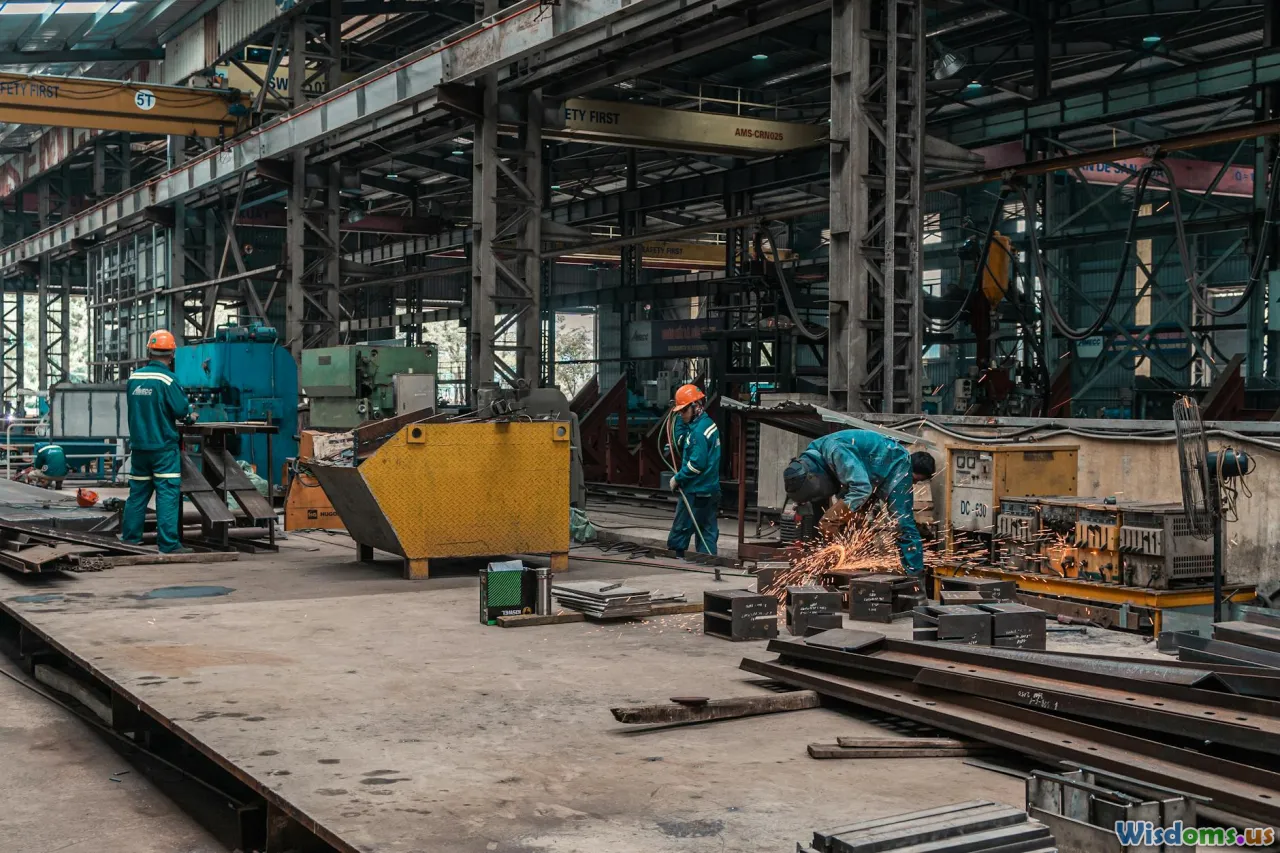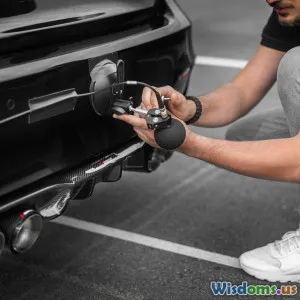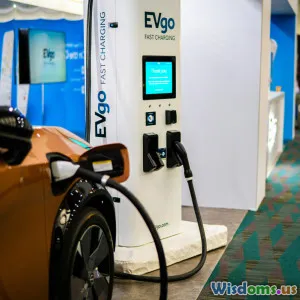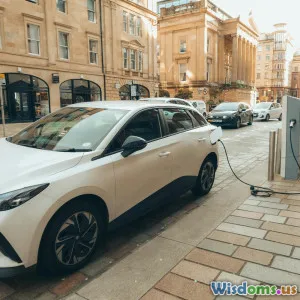Navigating the Chip Shortage Impact on New Car Prices
14 min read Explore the causes and effects of the global chip shortage on new car prices and consumer choices. (0 Reviews)Navigating the Chip Shortage Impact on New Car Prices
Automotive showrooms once brimming with variety now showcase a slimmer selection as dealerships scramble to meet buyers' demands. For most consumers, the terms "semiconductor" or "microchip" might never cross their minds during the thrill of car-shopping, but today, these tiny components wield outsized influence over new car prices worldwide. The ongoing global chip shortage has irreversibly altered automotive markets, catalyzing price hikes, shifting buyer behaviors, and forcing industry-wide innovation. If you're wondering how to navigate this challenging landscape—whether as a first-time buyer, an enthusiast, or a return customer—understanding the intricate ways the chip shortage affects new car prices is essential. Let’s explore how we arrived here and what you can do to minimize its impact on your next purchase.
The Anatomy of the Semiconductor Shortage
To appreciate the price surge, it's crucial to grasp the supply chain disruptions that ignited the crisis. Modern vehicles are marvels of technology, boasting sophisticated infotainment systems, advanced driver assistance, and even smart safety features. All depend upon semiconductors—tiny, wafer-thin chips manufactured mostly in a handful of specialized facilities globally, with Taiwan, South Korea, and the US leading the charge.
The chip shortage began unraveling in late 2020, an unexpected fallout from the COVID-19 pandemic. During global lockdowns, automakers, fearing a sales slump, scaled back orders for chips. At the same time, consumer electronics (laptops, games consoles, smart devices) saw historic demand spurts, absorbing much of semiconductor production capacity. When automotive demand rebounded faster than anticipated, the chip pipelines ran dry, with months-long backlogs forming overnight.
Consider: A single car model, such as the Ford F-150, can require over 1,000 individual chips. When even one chip is missing, the entire vehicle may sit incomplete. The knock-on effect is less supply for dealerships—and a new reality for buyers: rising prices and longer waits.
How the Chip Shortage Drives Up New Car Prices

As of mid-2023, U.S. buyers faced an average new vehicle price of over $48,000—a 30% increase over five years, according to Kelley Blue Book. The shortage's pressure on supply is the main culprit. Dealerships—once able to haggle—have seen their inventories cut by more than half. The new normal includes scant negotiation room, added dealer markups, and few incentives.
Industry data illustrates this reality:
- Inventory Drops: Average days’ supply of new cars plunged from over 60 days to less than 30 at its nadir in 2022, according to Cox Automotive.
- Dealer Markups: Some popular models, such as the Toyota RAV4 Prime or Ford Bronco, have routinely listed for $5,000–$10,000 over MSRP.
- Fewer Incentives: Automakers slashed cash-back and low-APR offers, prompting buyers to pay closer to sticker price.
For the budget-conscious, these rapid increases force tough decisions: delay the purchase, settle for less-equipped models, or pay the premium.
Brand-by-Brand: How Major Automakers Respond

Not all automakers are affected equally. Japanese giants like Toyota and Honda managed the crisis relatively well, relying on traditional supply chain philosophies and larger chip inventories. Domestic producers such as Ford and General Motors, recognizing the strategic importance of semiconductor security, have accelerated direct partnerships with chipmakers.
Some practical brand examples include:
- Ford: Temporarily delivered some models with incomplete feature sets (e.g., missing chips for non-critical functions, to be retrofitted later).
- Tesla: Showed remarkable agility, rewriting software to adapt to alternative chips and maintaining near-constant output.
- Hyundai: Benefited early from their forward procurement style, stocking up just before the worst of the bottleneck.
Ultimately, shoppers will find that high-demand vehicles, in particular, remain above pre-pandemic price baselines. Even luxury automakers—historically more insulated—reported shortages in flagship models and incorporated alternate tech, directly impacting cost and consumer experience.
Alternative Strategies for Car Buyers in a Tight Market

Rising new car prices don't mean consumers are powerless. Buyers can mitigate the financial sting and secure the right car for their needs with creative planning and adaptability. Consider these approaches:
1. Be Flexible With Preferences:
Willingness to compromise on color, trim, or options can widen your available choices. Popular configurations (like all-wheel drive or the latest infotainment upgrades) face the longest delays and steepest markups.
2. Consider Certified Pre-Owned or Slightly Used Vehicles:
Used car prices have also risen, but often trail behind new models' sticker shocks. Certified pre-owned (CPO) programs from brands like Lexus, Honda, and Toyota can provide peace of mind—their vehicles often come with extended warranties, low mileage, and thorough inspections.
3. Shop Across Regions:
Regional supply disparities mean that a car in low supply in California could be more readily available (and possibly cheaper) in Kansas. National inventory search tools and even buyers’ services can help locate a better deal.
4. Leverage Factory Orders:
Ordering directly from the manufacturer might extend your wait, but could net you a better price and eliminate some dealer markups. Brands like Subaru and BMW allow bespoke orders, so you pay for only the features you want.
5. Negotiate Fees, Not Just The Sticker Price:
With supply low, some fees ("market adjustment,” document prep) are negotiable—especially as new inventory slowly rebounds. Don't hesitate to ask for clarity on every charge.
A Look at Alternative Technologies and Options

The chip shortage isn’t just nudging prices upward—it’s also accelerating a transformation in consumer preference and automotive technology. Electric vehicles (EVs) and hybrids, for example, occupy a unique space; while some, like Tesla, managed supply chains creatively, others endure waitlists due to their greater reliance on chips.
Buyers now scrutinize tech features more closely. Some automakers, like GM and Volkswagen, responded by removing chip-intensive extras like wireless charging or certain driver-assist features to keep core models shipping. This means shoppers may face trade-offs between amenities and availability.
The rising interest in mobile-first interfaces and advanced driver-assistance systems also boosts demand for cutting-edge chips, perpetuating the shortage's effects. As EV adoption and semi-autonomous technology grow, industry-wide chip requirements balloon—potentially lengthening the shortage or raising costs on complex models.
Global Solutions and Supply Chain Innovations Emerging
Recognizing the economic ripple effects, governments and businesses are investing billions in domestic chip manufacturing. The United States' CHIPS Act, passed in 2022, aims to supercharge domestic semiconductor production with subsidies for new chip plants in Texas, Arizona, and Ohio, aiming to reduce foreign dependency.
Major automakers are hedging future challenges through collaborative agreements with suppliers. For instance, Ford and GM inked long-term deals with chip manufacturers (like GlobalFoundries) to keep future lines moving. Meanwhile, companies like TSMC (Taiwan Semiconductor Manufacturing Company) continue expanding capacity, though any new fab brings major lead times.
One innovative approach is modular vehicle design—allowing for streamlined installations of missing features as chips become available. This shift promises speedier vehicle delivery and more adaptable automotive products, although full implementation remains years away.
Tips for Prospective Buyers: Navigating a Post-Shortage Market

The road ahead will see gradual improvements, but proactive buyers can forecast smarter moves and more strategic purchases. Here’s how to maximize your position as the chip shortage evolves:
a. Stay Informed and Patient
The fastest deals now often command the highest premiums. Monitoring inventory releases and incentivized offers—using dealer mailing lists or apps such as Edmunds or TrueCar—can alert you when your preferred model returns to the lot.
b. Consider Leasing
Lease terms may become increasingly attractive, as manufacturers and dealers encourage leases to keep buyers in the system during shortages. Leasing enables you to bypass inflated sale prices, especially if your mileage is moderate.
c. Preserve Your Current Vehicle
Deferred purchases remain a wise choice for those capable of maintaining their current ride. Average vehicle age in the U.S. reached an all-time high of 12.5 years in 2023, per IHS Markit, as more owners opt for repairs instead of facing steep new prices.
d. Think Beyond Traditional Retail
Online-only dealerships and direct-to-consumer models, popularized by Tesla and upstarts like Rivian or Carvana, can bypass certain dealer markups and offer delivery options for rare models. These novel platforms enable price transparency rarely found in conventional showrooms.
What the Future Holds: Evolution in the Auto Industry

While no crystal ball perfectly reads the global market, economists and industry experts predict semiconductor production will catch up by 2025, with ripple effects lingering until automakers fully restock. The shortage's legacy, however, includes positive changes. Automakers now see chip supply as mission-critical, akin to steel or rubber. Integrated partnerships may keep future disruptions at bay.
Meanwhile, car buyers emerge more educated and discerning. Comparing offers, understanding supply chain issues, and knowing when—and how—to negotiate have become default behaviors. Manufacturers, too, invest more aggressively in future-proofing the automotive supply chain, opening up exciting possibilities for smarter, more customizable cars once inventory flows freely again.
Navigating the heightened price world wrought by the chip shortage demands knowledge, planning, and a willingness to adapt. By tracking the market and harnessing emerging buying strategies, consumers can still find exceptional value—and perhaps even uncover new opportunities in the evolving world of smart, connected transportation.
Rate the Post
User Reviews
Popular Posts




















